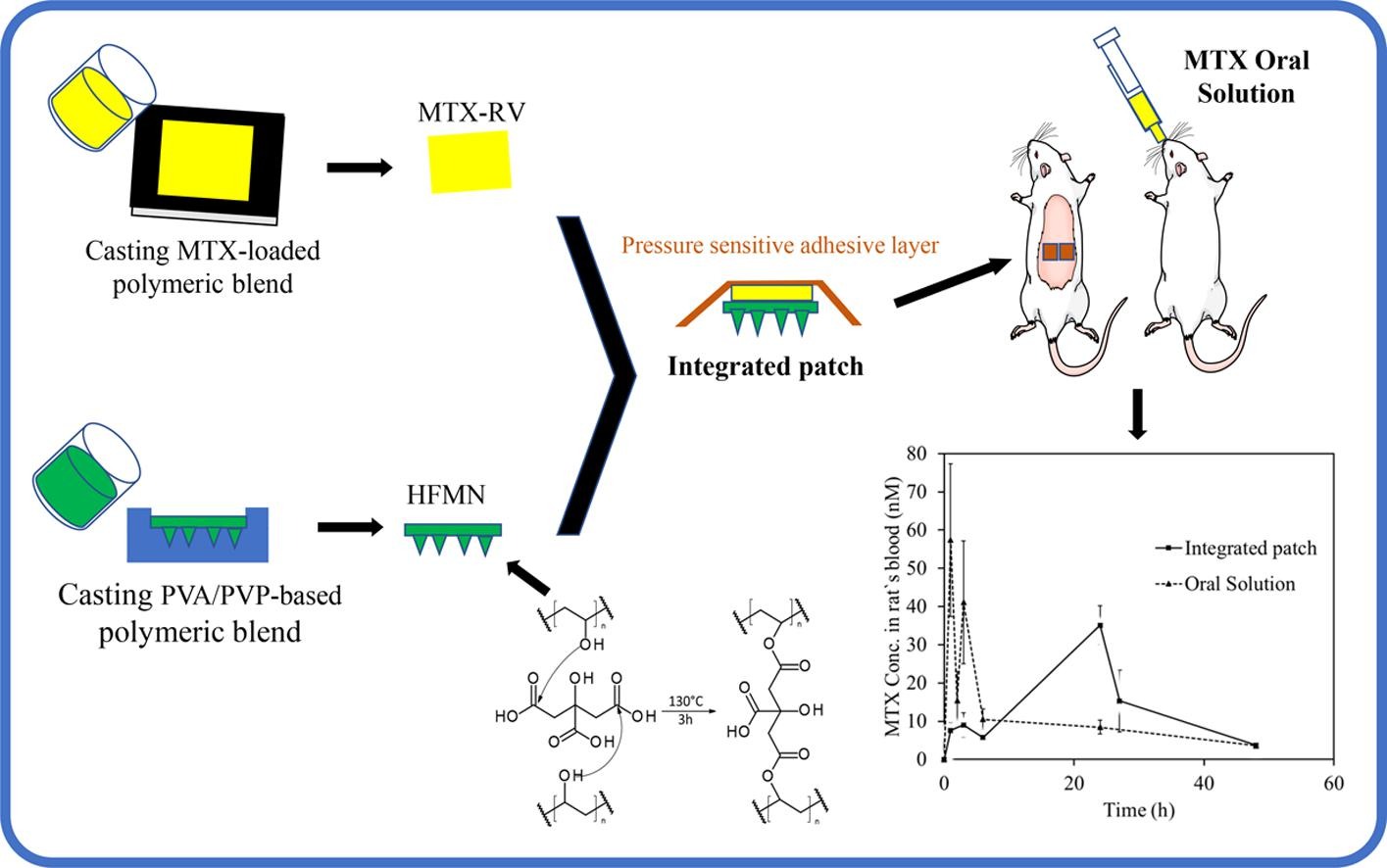Development and characterisation of novel poly (vinyl alcohol)/poly (vinyl pyrrolidone)-based hydrogel-forming microneedle arrays for enhanced and sustained transdermal delivery of methotrexate

Highlights
- Novel hydrogel-forming microneedles were produced.
- Their physicochemical properties were promising.
- Methotrexate was successfully delivered in vitro and in vivo.
Methotrexate (MTX) is one of the mainstays of treatment for rheumatoid arthritis (RA) and juvenile idiopathic arthritis (JIA) and it is mainly administered either orally or by subcutaneous (SC) injection, which are not so satisfactory. While orally administered MTX is associated with variable bioavailability and causes gastrointestinal side effects, including nausea and vomiting, SC injection is painful and produces high peak blood levels of MTX. Transdermal delivery presents an attractive alternative administration route. However, MTX passive permeation through the skin is hindered by the skin barrier and MTX physicochemical properties.
To address these issues, hydrogel-forming microneedle arrays (HFMN) and a patch-like reservoir loaded with MTX (MTX-RV) were developed and combined to form a minimally invasive patch to deliver MTX transdermally in a sustained manner. HFMN were prepared from an aqueous blend of poly (vinyl alcohol) (PVA) and poly (vinyl pyrrolidone) (PVP) which was crosslinked chemically with citric acid (CA) at 130˚C. MTX-RV was prepared from hydroxypropyl methylcellulose (HPMC) and glycerol. Both the HFMN and MTX-RV were fully characterised and then combined to form an integrated patch, which was evaluated ex vivo and in preclinical studies. The HFMN demonstrated a satisfactory mechanical strength and insertion capability into excised neonatal porcine skin, as well as moderate swelling properties.
The MTX-RV incorporated a high dose of MTX (150.3 ± 5.3 µg/mg) without precipitation. The integrated patch delivered MTX at a steady-state flux of 506.8 ± 136.9 µg.cm2/h in an ex vivo setup. Furthermore, in preclinical studies performed in Sprague Dawley rats, MTX appeared in blood after 1 h from patch application at a concentration of 7.6 ± 2.0 nM. MTX blood level increased gradually to reach its peak, Cmax = 35.1 ± 5.1 nM, at 24 h. Importantly, the HFMN were removed intact from the skin with only mild erythema, despite the cytotoxic nature of MTX. Accordingly, the integrated patch produced in this work represents a promising minimally invasive transdermal drug delivery system that can overcome the skin barrier and deliver MTX in a sustained manner. This may help in minimising or even avoiding the nausea and vomiting, associated with the conventional administration routes.
See the article and the full paper
Author links open overlay panelIsmaiel A.Tekko, Gaoyun Chen, Juan Domínguez-Robles, Raghu Raj SinghThakur, Iman M.N.Hamdan, Lalitkumar Vora, Eneko Larrañeta, James C. McElnay, Helen O.McCarthy, MadeleineRooney.Ryan F.Donnelly,
International Journal of Pharmaceutics
Volume 586, 30 August 2020, 119580
Keywords: Methotrexate, Juvenile idiopathic arthritis, Transdermal delivery, Hydrogel-forming microneedles, Crosslinking, Sustained release

